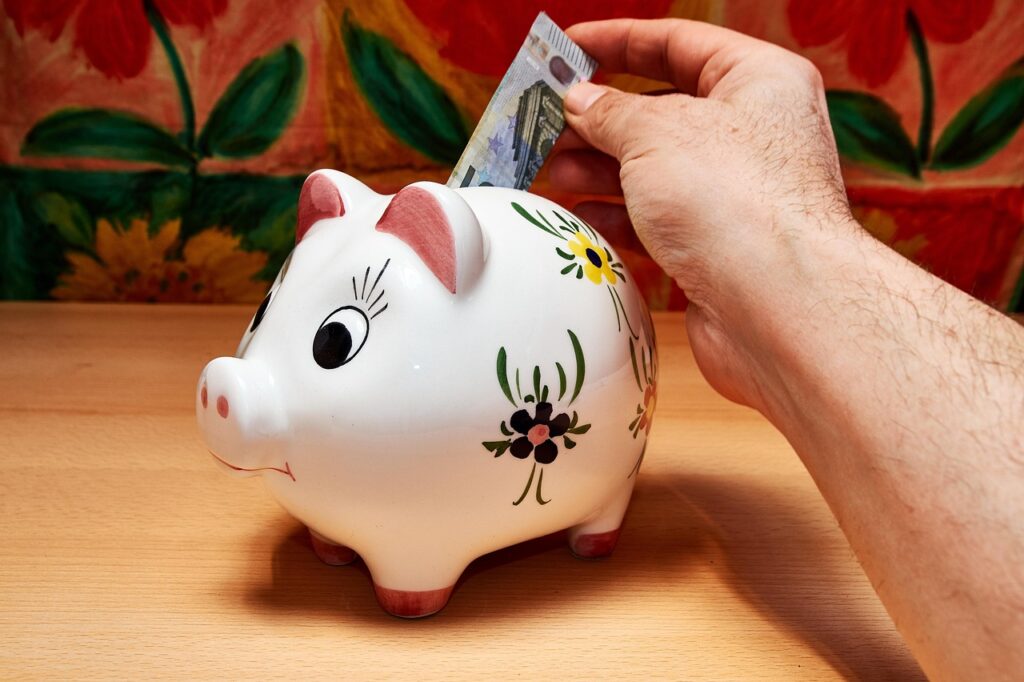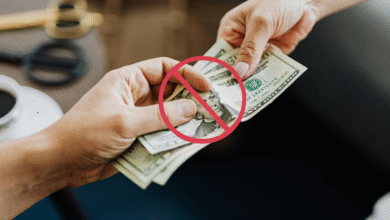15 Brilliant Ways To Save Money On Everyday Expenses

Your paycheck hits your account on Friday, and by Wednesday, you’re wondering where it all went. Sound familiar? You’re definitely not alone. I see this pattern constantly in my financial consulting work, and here’s the kicker: most people aren’t broken because they earn too little they’re broke because they bleed money on stuff they barely notice.
The real secret? You don’t need to become a hermit eating beans and rice forever. Instead, you need to get intentional about how you spend. Think of it like this: small leaks sink big ships, and your budget is no exception.
The good news is that making strategic changes to your daily spending can free up hundreds or even thousands of dollars annually without sacrificing the lifestyle you enjoy.
This article walks you through practical, actionable strategies that actually work. I’ve personally tested most of these, and my clients have seen dramatic results. Ready to keep more of your hard-earned money? Let’s dig in.

1. Practice DIY Maintenance And Repairs
Here’s something that surprised me when I first became a homeowner: handymen and mechanics charge premium prices for work that’s often surprisingly simple. I called a plumber for a dripping faucet once and got quoted $150 just for the visit. Turns out, I fixed it myself in 15 minutes with a $12 wrench.
The opportunity here is massive. Most people don’t realize that YouTube has become the world’s largest how-to library. Want to learn how to fix a leaky pipe, replace cabinet hinges, change your car’s oil, or patch drywall? The tutorials are free and often better explained than anything you’d find in a manual.
Building Your Basic Toolkit
You don’t need a $500 industrial setup. Invest in these essentials:
- A multi-bit screwdriver set (~$15)
- Adjustable wrench and pliers (~$20)
- Cordless drill-driver (~$50)
- Basic socket set (~$30)
- Caulk gun and sealant (~$15)
That’s roughly $130 upfront, and you’ve just avoided paying $150+ for a single service call. Over a year, handling even three to four minor repairs yourself generates massive ROI. IMO, this is one of the easiest wins in your budget 🙂
2. Cook At Home Instead Of Dining Out
A restaurant charges you $18 for a burger that costs them maybe $3 in ingredients. That same burger takes you 10 minutes to make at home for roughly $4. Now multiply that by 20 meals per month. You’re looking at $280 in restaurant spending versus $80 at home. That’s $200 saved monthly, or $2,400 per year, just by making this one shift.
And here’s what bothers me about eating out: you’re paying premium prices for mediocre food more often than not. When you cook at home, you control the ingredients, portions, and quality. You know exactly what goes into your food, and honestly, homemade tastes better anyway.
Making Home Cooking Actually Doable
The secret to sticking with this isn’t willpower it’s systems. Here’s what works:
Meal prep on Sunday: Dedicate two hours to prepping proteins and vegetables. When food is ready to go, you eat it instead of ordering takeout when you’re tired.
Keep your pantry stocked: Buy staple ingredients in bulk rice, beans, frozen vegetables, canned tomatoes. These form the base of hundreds of meals and cost pennies per serving.
Find your go-to recipes: You don’t need variety every night. Pick five recipes you genuinely enjoy and rotate them. Less decision fatigue, faster cooking, lower grocery bills.
Hunt for budget recipes: Websites like Budget Bytes and Skillet have incredible recipes built around saving money without sacrificing taste.
Think about it: what could you do with an extra $2,400? Build an emergency fund? Pay down debt? That’s money from literally just cooking at home.
3. Use Coupons And Discount Apps
Here’s what frustrates me: people walk into stores and pay full price for everything because they can’t be bothered to check for deals. Meanwhile, apps literally do this work for you automatically. FYI, there’s zero reason not to leverage this, and you’d be leaving money on the table by ignoring it.
Apps like Rakuten give you cashback on purchases you’re already making—we’re talking 1-40% depending on the retailer. Honey automatically applies coupon codes at checkout without you lifting a finger. Ibotta rewards you for buying specific grocery items and submitting receipts (yes, really).
Real Savings Breakdown
Let’s say you spend $400 monthly on groceries:
- Using digital coupons saves you roughly 15%, cutting $60 from that bill
- Cashback apps give you another 5%, adding another $20
- Loyalty program discounts shave off another $15
That’s $95 monthly, or $1,140 annually, just by spending five minutes setting up apps and checking them before checkout. Even if you’re only saving $50 per month through effort, that’s $600 a year for basically nothing.
The barrier? There isn’t one. Download the apps right now. That’s it. You’re already shopping anyway make the system work for you.
4. Take Advantage Of Free Community Events
Entertainment budgets drain wallets faster than you’d think. A family movie night costs $60-80 when you factor in tickets and snacks. Four dates per month? You’re spending $240-320 just on entertainment, and that’s before you even think about concerts or other outings.
Here’s the plot twist: your community likely offers incredible free options, and most people have no idea they exist.
Where Free Entertainment Hides
Check these places:
- Local parks and recreation departments: Free outdoor concerts, movie nights, and festivals throughout the year
- Libraries: Free movie screenings, concerts, author readings, and workshops
- Museums and cultural institutions: Many offer free admission nights or pay-what-you-wish hours
- Community theaters: Performances cost $5-15 versus $20+ for commercial cinema
- City websites: Most municipalities have event calendars showing everything happening that month
I went to a free jazz concert in a local park last summer, and honestly? It rivaled paid events I’ve attended. The experience was fantastic, and my cost was zero dollars. We brought wine and cheese from home (another victory), and it cost us maybe $8 total as a couple.
You don’t sacrifice fun you just outsource the expensive stuff and find authentic entertainment your community is literally offering for free.
5. Plan Errands To Minimize Fuel Consumption
This is such an easy optimization that most people completely miss it. Here’s the typical scenario: you need to go to the grocery store, then the bank, then the pharmacy and you make three separate trips. That’s wasteful and expensive.
Gas prices fluctuate, but efficiency is always in your control. If your weekly fuel costs $50, inefficient routing means you’re burning money on unnecessary miles. Smart planning cuts that substantially.
The Numbers
Run the math:
- Reduce weekly fuel consumption by just 1 gallon = $208 saved annually (at $4/gallon)
- Reduce by 2 gallons = $416 saved annually
- Reduce by 4 gallons = $832 saved annually
This isn’t hypothetical. Most people waste at least 3-5 gallons weekly through poor route planning.
Here’s your action step: Before leaving home, map out every errand in logical sequence. Use tools like Google Maps to see the most efficient route. Batch errands by location all shopping on Tuesday, all financial stuff on Thursday. Group these strategically into one trip.
Apps like GasBuddy also show you the cheapest stations nearby, letting you save $0.20-0.50 per gallon. That’s $8-20 per tank just by choosing the right station. Over time, this adds up.
6. Use Energy-Efficient Appliances
Your electrical bill is one of those costs that quietly grows every month without you noticing. Until you get the bill. Then you notice it. Older appliances and inefficient habits are money drains that persist year after year because they’re invisible.
I upgraded to LED bulbs in my house last year, and my electricity bill dropped noticeably. LEDs use 75% less energy than incandescent bulbs and last 25 times longer. So, you save for electricity and replacement costs. That’s a win-win.
High-Impact Changes
Smart thermostat: These adjust temperature automatically based on your schedule and preferences. You save $100-300 annually on heating and cooling alone. The upfront cost is $200-300, so payback happens within a year.
LED lighting throughout your home: Initial investment is maybe $50-100 for a whole house. Annual electricity savings: $75-150. Payback period: under a year.
Energy Star appliances: Washer, dryer, and dishwasher replacements cost more upfront, but annual savings reach $100-200 combined. For a 10-year lifespan, that’s $1,000-2,000 in your pocket instead of the utility company’s.
Quick wins (free):
- Unplug devices when not in use
- Use power strips to cut phantom power drain
- Run dishwasher and laundry during off-peak hours
- Close blinds at night to retain heat
These simple changes save $100-200 annually without spending a dime. That’s found money just sitting there waiting for you to pick it up.
7. Shop With A List To Avoid Impulse Purchases
Stores are designed to manipulate you. Strategically placed items at eye level, end-cap displays with screaming red signs, seasonal merchandise positioned right at the entrancretailers spend millions studying how to separate you from your money. Without a plan, you’ll lose that battle every single time.
I tracked my impulse spending once and realized I spent nearly $80 per store visit on things I didn’t plan to buy. Multiply that by 20 visits per month? That’s $1,600 monthly in unplanned spending. That’s insane when you think about it.
The Shopping List System
Step 1: Plan your meals for the week. Seriously, just write down breakfast, lunch, and dinner for seven days.
Step 2: List only the ingredients you need for those meals, plus household essentials. Nothing else.
Step 3: Go shopping with that list and a commitment to stick to it. Don’t deviate.
Step 4: Use the “perimeter method” shop the outside edges of stores where real food lives (produce, meat, dairy). Avoid the center aisles where processed stuff with fancy packaging tempts you.
The power of this approach: You go in knowing exactly what you need and how much you’re spending. There’s no browsing, no “Oh, that looks good,” no wandering into the snack aisle. Just mission-driven shopping.
Studies show that shopping with a list reduces grocery spending by 15-30%. For a $300 monthly grocery budget, that’s $45-90 saved each month, or $540-1,080 annually. It’s absurdly simple and incredibly effective.
8. Review And Cancel Unused Subscriptions
This might be the easiest money-saving tactic I know of. Most people have subscriptions they forgot they even had, quietly charging every month.
I asked a client to audit their subscriptions once, and we found seven active subscriptions totaling $87 monthly ($1,044 per year). They’d actively used two of them. The other five? Forgotten entirely. After canceling the unused ones, they immediately freed up $60 per month with literally zero lifestyle change.
The Subscription Audit
Pull up your credit card statements from the last three months. Look for recurring charges. Common culprits include:
- Streaming services (Netflix, Disney+, HBO, Hulu, Apple TV+)
- Fitness apps or gym memberships
- Magazine and newspaper subscriptions
- Software licenses you don’t use
- Cloud storage plans
- Meal kit services
- Meditation and wellness apps
- Newsletter subscriptions
Ask this about each one: “Did I actively use this in the last month?” If the answer is no, cancel immediately. Don’t overthink it.
For subscriptions you genuinely use but find expensive, consider these options:
Downgrade to a lower tier: That family Netflix plan ($22) could drop to the standard plan ($15), saving $7 monthly or $84 annually.
Rotate services: Subscribe to one streaming platform for three months, then switch to another. You still get access to different content but pay a fraction of the price of maintaining multiple subscriptions.
Share family plans: Netflix’s family plan costs ~$22 and covers four households. Split among four people, each person pays ~$5-6. That’s a 75% savings compared to individual plans.
Removing five unused subscriptions averaging $15 each = $75 monthly savings = $900 annually. That’s a month of vacation, emergency fund building, or investing in something that actually matters to you.
9. Implement The Envelope Budgeting System
If you struggle with overspending despite your best intentions, the envelope system is your financial reset button. This method forces accountability because you physically see your money and watch it disappear when you spend it. It’s harder to ignore than a credit card that just works until you check the statement.
Here’s how it works: assign cash to spending categories and put actual cash into separate envelopes. Once an envelope is empty, you stop spending in that category. Period. There’s no “just charging it” or “I’ll pay it back.” When the cash is gone, you’re done.
Setting Up Your Envelope System
Essential categories to create:
- Groceries
- Dining and entertainment
- Fuel
- Household items
- Personal care
- Gifts and miscellaneous
The amount per envelope depends on your budget, but here’s a basic approach: track your spending in each category for one month, average it, and assign that amount to each envelope monthly.
Why this works: Psychological research shows that spending cash feels more real than digital transactions. Handing over physical bills creates resistance. That friction prevents impulse purchases. You think before spending when cash is involved.
I recommended this to a client drowning in credit card debt, and she eliminated $300 of monthly overspending within two months. The physical act of watching her grocery envelope empty made her more conscious of what she purchased. Same person, same income, completely different spending behavior.

10. Use Public Transportation Or Carpool
The constraint creates discipline. You can’t spend money you don’t have in front of you. It’s brilliant in its simplicity.
Car ownership costs are astronomical when you actually break them down. There’s the monthly payment (if you’re financing), insurance, gas, maintenance, parking, registration it’s a never-ending list. Driving daily multiplies these costs exponentially.
I ran the numbers once. My cost per commute mile was roughly $0.68 when I added up everything. Driving 20 miles daily meant I was spending $13.60 daily or $3,400 annually just on the variable costs of driving (not including the car payment).
When I switched to public transit, my monthly pass cost $120. That’s $1,440 annually. That’s a $1,960 annual difference. And that doesn’t even account for the three hours weekly I gained back by not driving in traffic.
Your Transportation Options
Public transit: Buses, trains, and light rail are cheap compared to driving. Monthly passes typically range from $50-150 depending on your city. Monthly savings: $150-400 compared to driving.
Carpooling: If you drive with coworkers and split costs, you cut fuel expenses in half. If three people share driving duties rotating weekly, you each drive one day weekly instead of five. Monthly savings: $50-200 depending on commute distance.
Biking: Free after initial bike investment. No fuel, no parking, plus you get exercise. Some cities offer bike-sharing programs for $100-200 annually.
Work-from-home days: If your employer allows remote work even one or two days weekly, cut your commute costs by 20-40%.
The math is compelling. Between transit, fuel, parking, and wear-and-tear, reducing car dependency saves $1,500-3,000 annually for most commuters.
11. Conduct A Home Energy Audit
Your home is probably hemorrhaging energy in ways you never notice. Heat escapes through gaps around windows. Air conditioning leaks out through poor insulation. Your thermostat is set to an inefficient temperature. These invisible drains cost real money, year after year.
A professional energy audit costs $150-300 and shows you exactly where problems exist. Many utility companies offer free or subsidized audits, so check there first.
If you want to DIY it, walk around your house on a cold or hot day and feel for air leaks around windows, doors, electrical outlets, and where walls meet foundations. Grab a simple thermal camera from Amazon for $20-30 to identify problem areas more precisely.
Quick Efficiency Wins
Seal air leaks: Weatherstripping around doors and windows costs $5-10 and takes an afternoon to install. Saves $50-150 annually on heating and cooling.
Upgrade insulation: If your attic or basement lacks proper insulation, adding it costs $500-1,500 but saves $100-300 annually. That’s a three to five-year payback.
Smart thermostat: Already mentioned earlier, but worth repeating saves $100-300 annually with a one-year payback.
Window treatments: Thermal curtains reduce heat transfer through windows. Cost is $50-150, savings are $30-75 annually.
Seal ductwork: Leaky ducts lose 15-30% of heated or cooled air. Having ducts professionally sealed costs $200-400 but saves $100-200 annually long-term.
These changes compound. Fix air leaks ($50 invested, $100+ saved), upgrade insulation ($1,000 invested, $200+ saved annually), install a smart thermostat ($300 invested, $200+ saved annually). Total annual savings reach $500+ from a $1,350 investment. That’s a three-year payback on money that benefits you for decades.
12. Buy Generic Brands
Here’s what irritates me about consumer behavior: people pay double (or triple) for packaging and marketing while assuming generic brands are inferior. The reality? Many generic products are literally identical to name brands, sometimes even made by the same manufacturer. You’re just paying extra for a fancy label.
A name-brand cereal box costs $6. The store brand right next to it costs $2.50. Same ingredients, same taste, different packaging. When you buy the expensive version, you’re paying for advertising you saw on TV, not actual quality differences.
Where Generics Make the Most Sense
Groceries: 80-90% of store-brand groceries are equal or superior in quality. Buy the store brand on everything except items where you have a genuine preference (maybe one or two things).
Medications: Generic medications are FDA-approved and chemically identical to name brands. There’s literally no reason to pay more unless you have an allergy to inactive ingredients (rare).
Household cleaners: All-purpose cleaners are all-purpose cleaners. The store brand works identically to the $5 name brand.
Clothing: Fast fashion brands markup aggressively. Often, store brands come from the same factories. You’re literally paying for the label.
Electronics accessories: USB cables, phone chargers, and screen protectors from reputable store brands work the same as fancy-branded versions.
The Math
Let’s say you spend $400 monthly on groceries and buy 30% name-brand items. Those items cost roughly $120. Switching to generics cuts that to $50 (roughly 60% savings on those items). Monthly savings: $70, or $840 annually.
Do this across groceries, medications, and household items, and you’re easily saving $1,200+ annually with zero quality trade-off.
13. Set Up Automatic Savings Transfer
Here’s the truth about saving: most people don’t do it because they lack willpower. They lack systems. Willpower is overrated; systems are everything. When you automate savings, you remove the decision-making entirely.
Set up a recurring transfer from your checking account to your savings account the day after payday. Make it non-negotiable, automatic, and out of your direct control. Your brain can’t override a system that doesn’t require decisions.
The Power of Automation
Let’s say you automate $25 weekly:
- $25 weekly = $1,300 annually
- After five years: $6,500
- After ten years: $13,000+
And you never felt that money missing because it left before you could spend it. This is called “paying yourself first,” and it’s the foundation of every financial success story I’ve encountered.
The key is starting small enough that you don’t notice it. If automating $25 is too much, start with $10. The amount matters less than the habit. Once you get used to it, increase by $5-10 every few months. Suddenly you’re saving $75-100 weekly without any pain.
Where This Money Goes
Build an emergency fund: Three to six months of expenses saved means unexpected problems don’t destroy your finances.
Compound interest: Money in high-yield savings accounts (4-5% APY) grows meaningfully. $25 weekly in a 4.5% account becomes $1,368 after one year, not just $1,300.
Create freedom: That automated savings account becomes your security blanket. It reduces financial stress and removes the panic that comes with financial emergencies.
Pro tip: Use a separate bank for savings so the money isn’t sitting in your checking account tempting you to spend it. Online banks like Ally or Marcus offer higher interest rates than traditional banks and make it slightly harder to access savings impulsively.
14. Adopt A Minimalist Lifestyle
Minimalism doesn’t mean eating ramen in a closet with three possessions. It means being intentional about what you own and removing the junk that doesn’t add value to your life.
Here’s what happens in a consumer society: you buy things to fill emotional voids or because marketing convinced you that you need them. That $200 jacket seemed essential in the store but hasn’t been worn in two months.
Those kitchen gadgets seemed like great ideas but live unused in a drawer. This clutter is expensive both in the money you spent and in the mental energy it consumes.
Minimalism and Money-Saving
Minimalism saves money in multiple ways:
It stops impulse purchases: Before buying something, ask: “Does this add genuine value?” Most impulse buys fail this test. You catch yourself and save the money.
It forces quality over quantity: When you own fewer things, you buy higher-quality versions. That $50 shirt you’ll actually wear 50 times is better than five $20 shirts you wear twice each.
It reduces waste: Less clutter means you use what you have instead of buying duplicates of things you forgot you owned.
It creates space: A cluttered home feels cluttered mentally. That psychological stress leaks into your spending habits. Clearing clutter often reduces spending stress.
Practical Minimalism Steps
The closet audit: Pull everything out. Put back only items you’ve worn in the last six months and that fit well. Donate the rest. Suddenly, you stop buying clothes because you see what you actually have.
The kitchen declutter: Keep cooking tools you use regularly. Donate unitaskers and duplicates. You don’t need five wooden spoons.
The shelf examination: Before keeping any item on display, ask if it brings you joy (Marie Kondo’s method) or if it’s just taking up space.
The experience priority: Spend money on experiences (travel, concerts, time with people you love) rather than stuff. Experiences bring lasting happiness; stuff brings temporary pleasure.
When you adopt minimalist principles, you stop spending money on things that don’t matter. You shift that money toward goals that actually improve your life. That’s a profound wealth-building principle.
15. Practice A 30-Day Rule For Purchases
This is my favorite behavioral economics hack. The 30-day rule stops impulse purchases by forcing a cooling-off period between desire and action.
Here’s how it works: anything non-essential that you want to buy, wait 30 days before purchasing. Put it on a list. Wait the month. After 30 days, if you still want it, buy it. If you forgot about it (and you will 90% of the time), you just saved that money.
Why This Actually Works
Dopamine decay: The rush you feel seeing something you want fades rapidly. That new thing is thrilling in the moment but loses its appeal. Thirty days is enough time for that impulse to disappear entirely.
Rational evaluation: With time between desire and action, your rational brain takes over from your emotional brain. That $200 gadget seemed essential when you wanted it but seems silly thirty days later when you think clearly.
Preference testing: Sometimes you realize your interest was temporary. The new hobby you wanted supplies for? You haven’t mentioned it since. The book you had to have? You forgot what it was about.
The 30-Day Rule in Action
A client wanted to buy a $500 exercise bike in January. She wrote it down with the date. On day 30, she barely remembered it. She’d already been using the staircase in her building and hadn’t thought about the bike once. She saved $500 just by waiting.
Another client wanted new kitchen appliances. Thirty days later, her existing ones worked fine. The want had passed. Saved $600.
The math: Even if this rule makes you avoid just one $100+ purchase monthly, that’s $1,200 saved annually.
Final Thoughts
You’ve made it this far because you’re serious about improving your finances and that already sets you apart. These strategies aren’t about deprivation; they’re about redirecting money from wasted spending to what truly matters.
Start small: pick three strategies this month, master them, then add a couple more next month. Gradually, you’ll uncover $200–500 a month in savings, freeing up thousands annually for your emergency fund, debt payoff, or investments.
Real financial change comes from consistent, small actions over time. Start today, and your future self will thank you. The money is waiting go get it.








